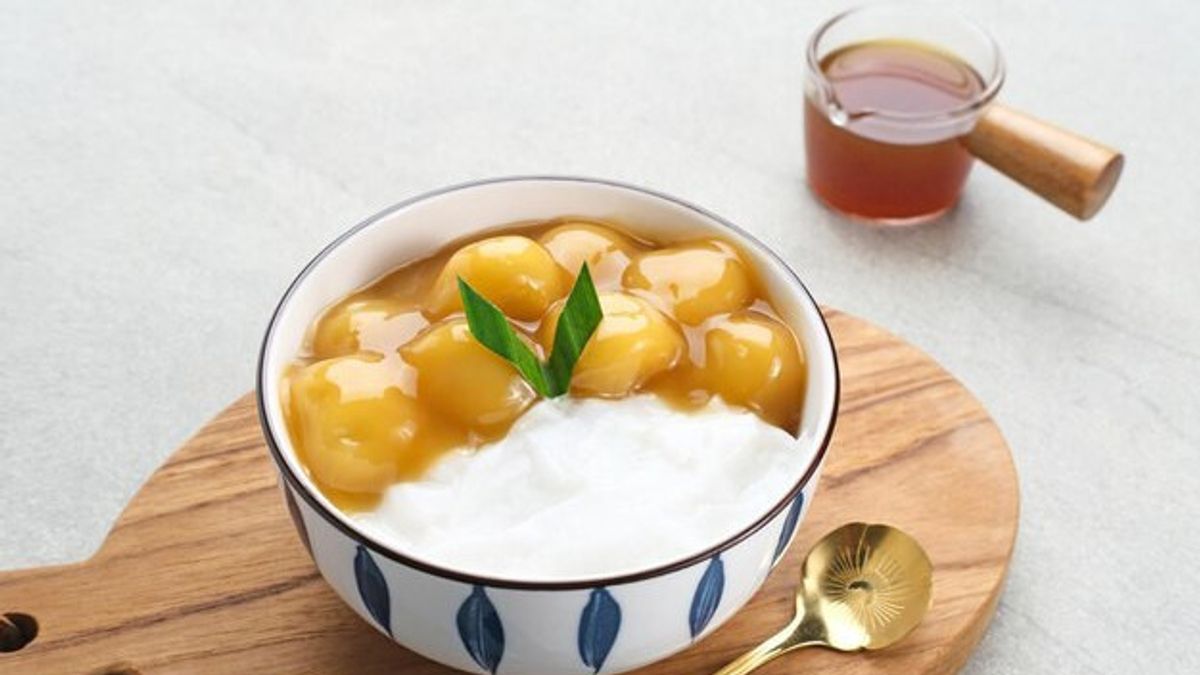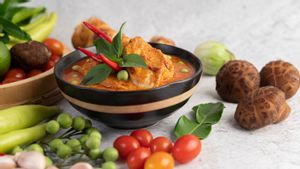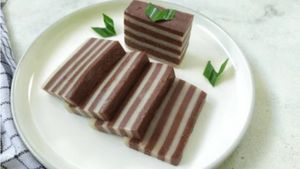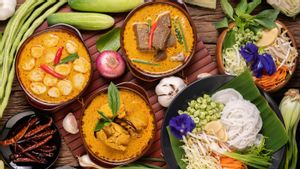YOGYAKARTA Porridge is a food or dish made from whole grains or whole grains boiled with water or milk. In the archipelago, there are dozens of types of porridge from all regions, either from Sabang to Merauke or from Miangas to Ndana Island. Already know what types of traditional porridge are in the archipelago? The following is a list and explanation.
This Aceh-style rumbi bubble has a strong spice taste. Because it uses pepper, jintan, adapter, Lawang flower, cardamom, ginger, and pandan leaves. Usually served during Ramadan because it has a texture softness so that it fills an empty stomach after opening time. This fertilizer has a salty and savory taste because it is given additional chicken, beef, and shrimp.
On the Island of the Gods, Bali, it also has a distinctive taste of taste in its dishes. Including mengguh porridge, which is popular in Teja Kula, Buleleng, North Bali. Balinese people call it fruity flavors. Rice is cooked with chicken broth and coconut milk as well as greeting leaves so that it gets a perfect taste. Uniquely, porridge is served with vegetable urap and suwir chicken and added fried earth beans and fried onions.
Still with thick flavor porridge but there is sweet taste from sweet potatoes and corn. This fertilizer from Manado, called tinutuan porridge, mixes rice ingredients with sweet potatoes, yellow labs, and sweet corn. Vegetables are also included in this dish, such as spinach, kale, and kemangi. The spices used include salt, lemongrass, turquoise, and turmeric. Usually served with fried jambal fish and sambal dabu.
A typical lemu bubble from Solo and Yogyakarta, also known as lemuk. Lemu porridge, from boiled rice with water and coconut milk until it gets a soft texture and a savory taste. In Solo, lemu porridge is served with chicken or egg opor, fried chili sauce krecek, and overlap chili or spicy tempeh. In Yogyakarta, it is used to be served with gudeg as well as krecek and additional side dishes such as suwir chicken, eggs, or tempeh and tofu bacem.
Still with a savory taste, but this bassang porridge from Makassar is more textured and dimpled with sweet flavors because it uses pulpit corn. Pulut Corn is a type of corn that tastes closely like glutinous. The corn is white so that it produces pale porridge.
The spicy fertilizer is known to come from Sambas and Pontianak. Launching the Language Agency, Kemendikbud, Wednesday, August 21, paddas carbohydrates made from rice that are soiled with refined coconut and spices. Then the mixed ingredients were cooked with vegetables such as kale, ferns, long beans, taoge, and kesum leaves. This kesum leaf emits a spicy aroma in porridge. Finally, porridge is served with fried anchovy and sprinkles of fried earth beans.
Manggul Porridge, from Madura, which is widely sold in traditional markets. Sold in the morning, as one of the breakfast menus. Porridge manggul made from rice flour cooked with water, coconut milk, greeting leaves, and salt. Usually, spices are added, such as ketumbar, kemiri, kencur, orange leaves, lengkuas, turmeric, and red chilies. The texture is likeability, but is served with coconut mushrooms and shrimp fried sambal. Usually given additional kemangi to have a more aromatic and fresh flavor.
This black Ase Porridge, because the porridge from Betawi uses a mixture of mouthwash and vegetable salt. Porridge as generally, comes from rice or is called rice porridge. Then served with meat mouths, vegetable salt, and other complements such as fried soybeans, crackers, and chilies.
Grilled sweet potato sago, has a sweet taste with an additional savory coconut milk. This bun is from Maluku, made from sago and sweet potatoes. In order to have a delicious aroma, in processing added pandan leaves.
Porridge sekoi has a sweet taste made from the base of sekoi seeds. Sekoi seeds are Jewawut which grows smoothly and is thrown away by the skin. This fertilizer is commonly known and closely related to the people of Bengkulu. Some Javanese people also process this porridge.
Grilling seasonings are traditional foods from Padang, West Sumatra. Theseferts have a bitter and sweet legit taste. The campion culverts, which are a combination of white glutinous porridge, black glutinous, comorbidities, banana or sweet potatoes, green peanut porridge, and candil porridge served in one dish. Variations of this number of porridges, creating rich textures and flavors.
The spinal cord is attached to a Nusantara dish, which is very easy to find in traditional markets. This fertilizer is made from rice flour that is processed with coconut milk and pandan leaves. The sauce is made of brown sugar, or sugar palm, disbursed with pandan leaves to give a fragrant taste. Usually, served with jackfruit or banana slice caps.
As the name implies, green peanut porridge is made from green beans that are boiled to very soft. Then added coconut milk and leaves to make it fragrant. To give taste, given brown sugar or white sugar. Also add cloves, ginger, and cinnamon to make it richer in taste.
Papeda is actually not porridge for the people of Maluku and Papua. Because this food has a soft texture and is processed like how to make porridge, it is called porridge. Papeda is processed made from sago flour which is processed typically so that it produces a sticky and thick texture. When eating it, yellow soup fish is also served.
Of course, it is not made from salak fruit seeds, it's just that small circles the size of salak fruit are a form of salak seed porridge. This fertilizer is famous in Java and Sumatra. In East Java and Central Java, it is known as genang grungdul. There are also those who call candil porridge.
Salak seeds are made from yellow or orange sweet potatoes. Then cooked typically with brown sugar and added sago flour to produce a sticky texture. Salak seeds are served with wild coconuts so that they form a perfect sour sweet taste.
SEE ALSO:
Of the five types of traditional porridge in Indonesia above, which one have you never tasted? Some types of porridge are quite easy to find in traditional markets. However, some other types, only made and served at certain moments, such as during Ramadan or other big days.
The English, Chinese, Japanese, Arabic, and French versions are automatically generated by the AI. So there may still be inaccuracies in translating, please always see Indonesian as our main language. (system supported by DigitalSiber.id)

















